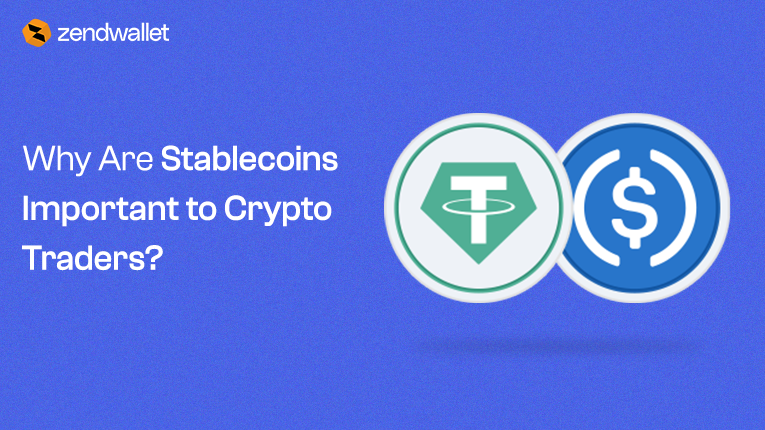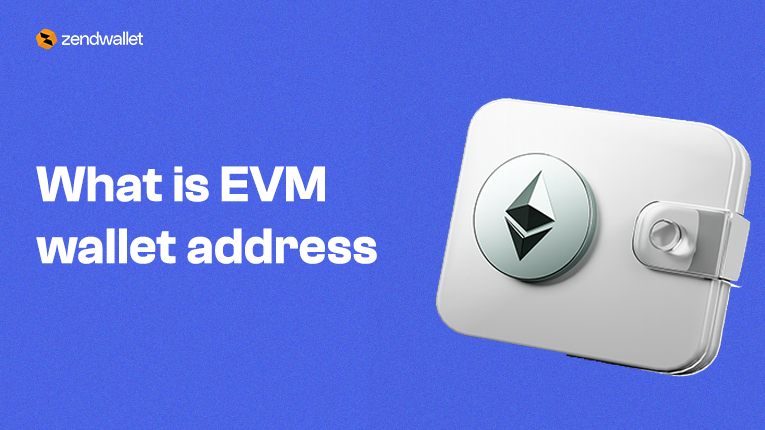Stablecoins have become a major force in the global cryptocurrency market, making up two-thirds of the trillions of dollars in crypto transactions.
They provide a middle ground between the price swings of traditional cryptocurrencies and the steady value of fiat currencies.
StableCoins – USDT & USDC maintain a stable price, usually pegged 1:1 to assets like the US dollar or commodities with predictable worth.
This reliability makes them a go-to option for traders, investors, and businesses seeking a trustworthy digital asset.
Stablecoins are gaining worldwide recognition as both a means of exchange and a dependable store of value, filling gaps that traditional currencies sometimes leave behind.
Their consistency and security make them a preferred choice for transactions across borders.
With cryptocurrency regulations shifting, StableCoins – USDT & USDC are now at the center of conversations that will shape the future of online transactions and global financial systems.
What is Stablecoin – USDT & USDC?
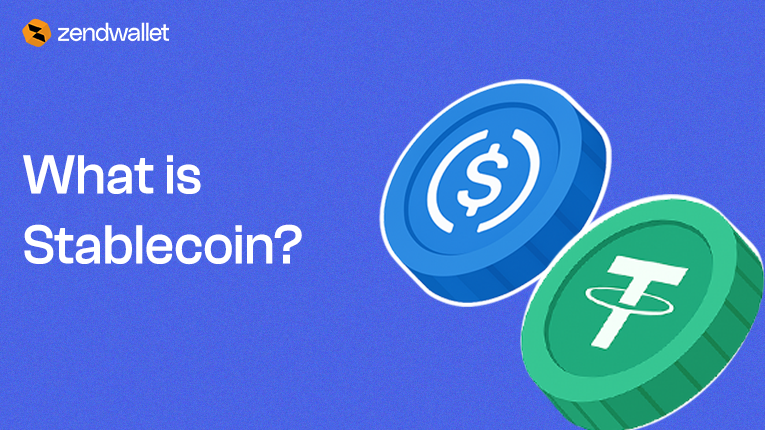
StableCoins – USDT & USDC are programmable digital currencies designed to hold a steady value. Most are pegged 1:1 to fiat currencies like the USD and issued on blockchain networks like Ethereum and Tron.
When Bitcoin launched in 2009, it introduced a decentralised financial system, removing the need for intermediaries.
However, its limited supply and speculative nature led to high price volatility, making it difficult to use as an everyday currency.
Ethereum later expanded the potential of cryptocurrencies by introducing smart contracts, giving rise to decentralised finance (DeFi). But like Bitcoin,
Ethereum’s native token, Ether (ETH), also faced significant price fluctuations.
Stablecoins emerged in 2014 to solve this problem by combining blockchain’s benefits of transparency, efficiency, and programmability with the stability needed for mainstream adoption.
By addressing crypto’s volatility, stablecoins have unlocked use cases beyond trading and speculation, attracting both retail users and institutions.
Types of StableCoins – USDT & USDC
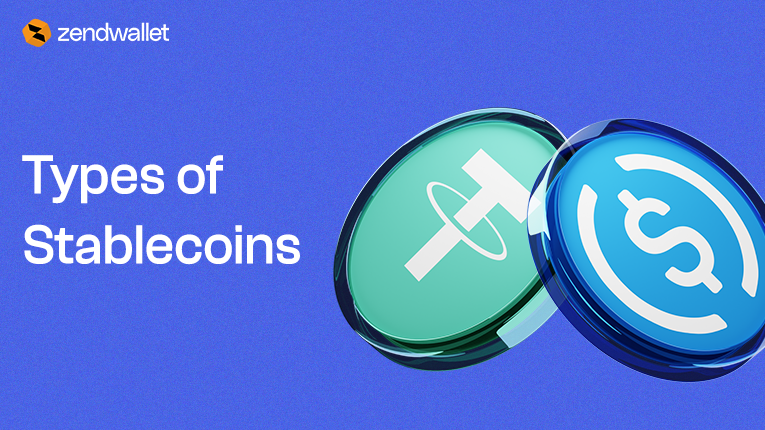
Stablecoins maintain their value through different mechanisms designed to ensure price stability.
Fiat-Pegged Stablecoins
Fiat-backed stablecoins are the most popular type, maintaining a 1:1 peg with traditional currencies like the USD or EUR.
These stablecoins hold reserves in cash or equivalent assets as collateral. Examples include Tether (USDT), USD Coin (USDC), and the euro-pegged Stasis Euro (EURS).
Commodity-Pegged Stablecoins
Commodity-backed stablecoins are tied to physical assets like gold and silver. They allow users to gain exposure to commodities without directly owning them.
Examples include PAX Gold (PAXG), where each token represents one troy ounce of gold, and Tether Gold (XAUT), which also offers gold-backed stability.
Crypto-Backed Stablecoins
Crypto-backed stablecoins use other cryptocurrencies as collateral.
Since crypto assets can be volatile, these stablecoins rely on overcollateralization, holding more assets than the pegged value to maintain stability.
Dai (DAI), for example, is backed by ETH and managed through smart contracts on the MakerDAO protocol.
U.S. Treasury-Backed Stablecoins
Unlike traditional fiat-backed stablecoins, U.S. Treasury-backed stablecoins like Ondo’s USDY and Hashnote’s USYC are supported by U.S. Treasuries and repurchase agreements.
These function like tokenized money market funds, offering holders passive income while staying aligned with regulatory standards.
Algorithmic Stablecoins
Algorithmic stablecoins rely on programmed mechanisms to maintain their peg without direct collateral.
Some, like Ampleforth (AMPL), adjust supply dynamically, while others, like Frax (FRAX), combine collateralization with algorithmic adjustments.
Ethena’s USDe is a synthetic USD-pegged stablecoin that uses crypto assets and automated hedging to maintain value.
However, the collapse of TerraUSD (UST) in 2022 highlighted the risks of purely algorithmic models.
StableCoins – USDT & USDC in the Crypto Market
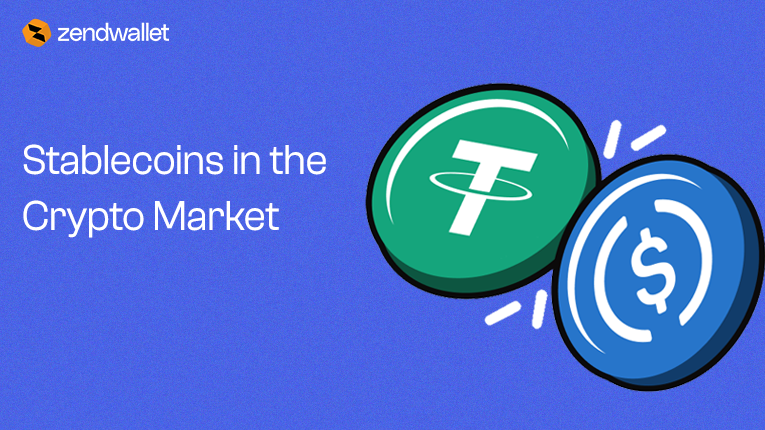
Beyond trading, stablecoins play a crucial role in the crypto ecosystem as a reliable medium of exchange, a store of value, and a bridge between traditional finance and digital assets.
As a key liquidity provider, stablecoins support DeFi platforms, centralized exchanges, and cross-border payments.
Their use has expanded significantly, even surpassing Bitcoin in certain regions for everyday transactions.
In places like Latin America and Sub-Saharan Africa, stablecoins are being used to hedge against currency instability, enabling low-cost remittances, secure savings, and easier access to DeFi services like lending and staking.
While institutional adoption is rising, much of the stablecoin market’s growth comes from transfers under $1 million, indicating strong non-institutional usage.
As crypto adoption continues to evolve, StableCoins – USDT & USDC are expected to play an even bigger role in global finance.
The Role of Stablecoins StableCoins (USDT & USDC) in the Crypto Market and Global Financial Ecosystem
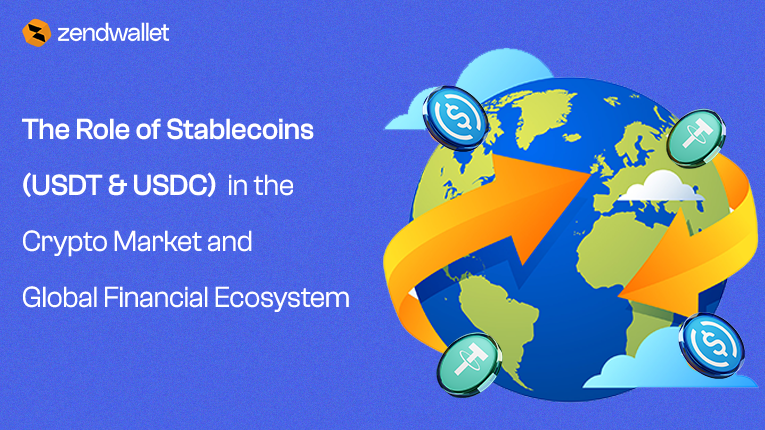
StableCoins – USDT & USDC have become a vital part of the cryptocurrency ecosystem, especially in decentralized finance (DeFi), centralized exchanges (CEXs), cross-border payments, and remittances.
These digital assets are designed to maintain a stable value, typically pegged to traditional fiat currencies like the US Dollar, Euro, or other commodities, making them invaluable in bridging the traditional financial system (TradFi) and the emerging digital financial ecosystem.
Stablecoins primarily serve three key functions within the cryptocurrency ecosystem: a reliable medium of exchange, a store of value, and a bridge between traditional finance and cryptocurrencies.
Unlike highly volatile cryptocurrencies like Bitcoin (BTC) or Ethereum (ETH), stablecoins maintain a stable value, making them an ideal choice for everyday transactions, savings, and hedging against inflation or local currency depreciation.
One of the key reasons for the growing importance of stablecoins is their ability to facilitate liquidity in both centralized and decentralized markets.
They underpin much of the activity in decentralized finance protocols by providing a stable form of collateral for loans, staking, and yield farming.
Additionally, stablecoins offer a less volatile alternative to traditional cryptocurrencies, making them a more attractive medium for cross-border payments, remittances, and digital transactions globally.
The Global Adoption and Growth of StableCoins – USDT & USDC
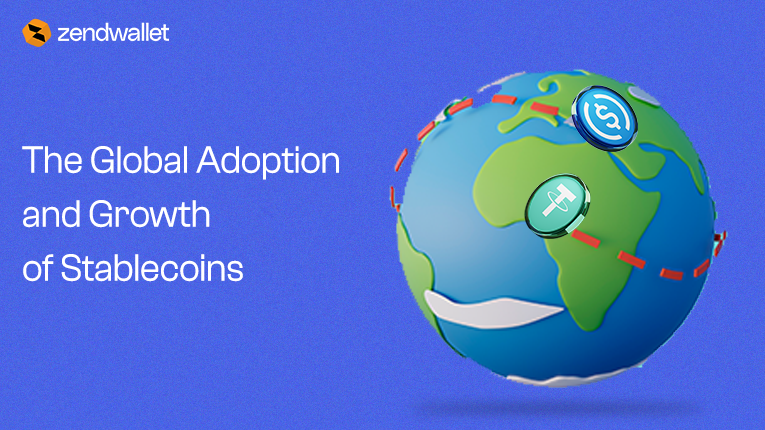
Stablecoin adoption has been particularly notable in regions experiencing economic instability, high inflation, or volatile local currencies.
Areas such as Latin America, Sub-Saharan Africa, and Eastern Europe have seen a sharp increase in the usage of StableCoins – USDT & USDC, largely driven by their ability to offer low-cost remittances, secure savings, and access to decentralized financial services like lending and staking.
Latin America and Sub-Saharan Africa have been particularly quick to adopt stablecoins as a hedge against local monetary instability.
In countries where national currencies are prone to volatility, stablecoins provide a means to preserve value and make transactions without relying on a fragile banking system.
These regions have seen year-over-year (YoY) growth in stablecoin usage exceeding 40%, with retail transfers driving much of the adoption.
In contrast, North America and Western Europe, regions with more robust financial infrastructures, have witnessed slower growth in retail stablecoin activity.
However, institutions in these regions are increasingly turning to stablecoins for liquidity management, cross-border payments, and settlement purposes
Notably, Western Europe particularly the UK, has a thriving market for merchant services, where stablecoins regularly represent 60-80% of the market share.
The Middle East and North Africa (MENA) region is also seeing a surge in stablecoin adoption, particularly in countries like Turkey, Saudi Arabia, and the UAE.
Turkey stands out, ranking at the top globally in stablecoin trading volume relative to GDP, highlighting the growing reliance on stablecoins for everyday transactions and as an alternative store of value.
In Eastern Asia, Hong Kong is positioning itself as a leader in stablecoin adoption, with a regulatory sandbox aimed at fostering innovation and testing StableCoins – USDT & USDC use cases.
The introduction of stablecoin regulations in the region is expected to further accelerate adoption.
Meanwhile, Singapore has also strengthened its regulatory framework, boosting confidence among both retail and institutional users of stablecoins.
Regulatory Framework for StableCoins – USDT & USDC
As stablecoins become more ingrained in the global financial system, regulators worldwide are working to develop frameworks that encourage innovation while addressing potential risks related to financial stability, consumer protection, and compliance with anti-money laundering (AML) and counter-terrorism financing (CFT) standards.
European Union (EU)
In the European Union, the introduction of the Markets in Crypto-Assets Regulation (MiCA) marks a significant step in creating a unified regulatory framework for stablecoins and other crypto-assets.
MiCA categorizes stablecoins into two types: asset-referenced tokens (ARTs) and e-money tokens (EMTs).
ARTs maintain value based on a basket of assets, including official currencies or commodities, while EMTs are typically pegged to a single fiat currency, such as the Euro or USD.
The regulations governing these stablecoins are expected to enhance consumer protection, ensure financial stability, and promote transparency.
Stablecoin issuers must adhere to strict governance rules, reserve asset management protocols, and redemption rights, with significant stablecoins subjected to higher capital requirements and more direct oversight by the European Banking Authority (EBA).
Singapore
Singapore has been a pioneer in creating a clear regulatory framework for stablecoins, with a focus on single-currency stablecoins pegged to stable, widely used currencies such as the Singapore Dollar or the US Dollar.
The Monetary Authority of Singapore (MAS) ensures that issuers meet stringent requirements for value stability, capital adequacy, and transparency, thus bolstering the legitimacy of stablecoins in the region.
Japan
Japan is also at the forefront of stablecoin regulation, having already established a comprehensive framework for fiat-backed stablecoins, emphasising financial stability and oversight.
The Japan Financial Services Agency (FSA) has allowed banks and licensed trust companies to issue fiat-backed stablecoins, ensuring they meet rigorous reserve requirements.
United States
In the United States, the regulatory environment for stablecoins remains uncertain but is under active discussion.
Proposed legislation, such as the Stablecoin Bill advanced by the House Financial Services Committee, aims to address issues like reserve transparency, AML compliance, and issuer accountability.
The lack of a comprehensive regulatory framework has led to some challenges, but significant progress is being made to clarify the rules around
stablecoin issuance and use.
Why Are StableCoins – USDT & USDC Important to Crypto Traders?
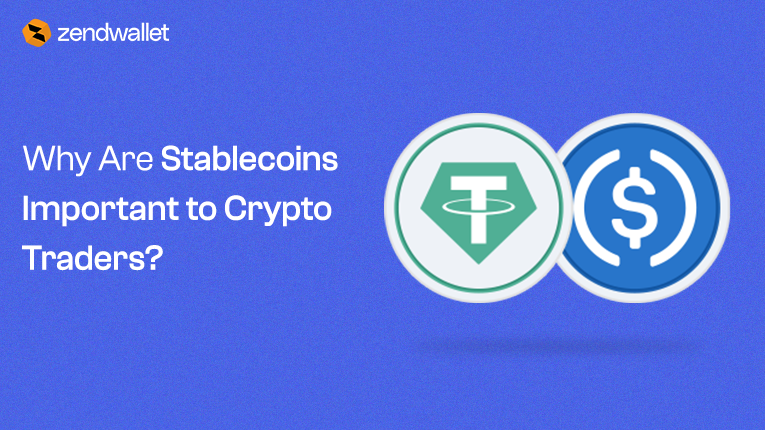
Stablecoins serve several vital roles in the crypto ecosystem, particularly for traders who need stability and efficiency.
1. Hedging Against Volatility
The cryptocurrency market is known for its extreme price volatility, with coins like Bitcoin often experiencing dramatic price swings.
Stablecoins allow traders to hedge against this volatility by holding assets that are less likely to lose value so soon.
When market conditions become too unpredictable, traders can convert their holdings into stablecoins to preserve their capital without having to exit the market entirely.
2. A Stable Medium of Exchange
StableCoins – USDT & USDC offer a convenient medium of exchange that is not subject to the massive fluctuations of traditional cryptocurrencies.
They allow traders to easily execute trades, pay for services, or transfer funds without worrying about the value of the coin changing drastically in the interim.
3. Facilitating Cross-Border Transactions
Stablecoins are increasingly being used to facilitate cross-border transactions, allowing people and businesses to send money internationally without the high fees and delays typically associated with traditional banking methods.
Because stablecoins are digital and borderless, they offer an efficient alternative to traditional money transfers.
4. Providing Liquidity and Low-Cost Trading
Many decentralized exchanges (DEXs) rely on stablecoins as liquidity pools for trading pairs.
By holding stablecoins, traders can easily swap between different cryptocurrencies without needing to move into fiat currencies, reducing both time and transaction costs.
This is particularly valuable in decentralized finance (DeFi) ecosystems.
5. Use in DeFi Platforms and Yield Farming
Stablecoins play a central role in decentralized finance (DeFi), where they are used as collateral for lending and borrowing platforms.
Traders and investors can also use stablecoins to earn yield through liquidity provision or lending activities.
This provides a way to earn passive income without exposing oneself to the volatility of other cryptocurrencies.
Major StableCoins – USDT & USDC Issuers
A few stablecoins dominate the market in terms of market capitalization and adoption. Tether (USDT) is the largest stablecoin by market cap, providing liquidity across multiple blockchains and playing a central role in crypto trading.
Despite facing scrutiny over its reserve management, Tether remains a key player in the global stablecoin ecosystem.
Circle (USDC), the second-largest stablecoin issuer, is known for its transparency, with weekly audits confirming the backing of USDC by cash and short-duration U.S. government treasuries.
Paxos, another prominent issuer, provides the infrastructure for several stablecoins, including PayPal USD (PYUSD), a relatively new entrant into the stablecoin space.
Use Cases for StableCoins – USDT & USDC
Stablecoins have evolved beyond their initial role as a medium for trading cryptocurrencies and now serve a variety of practical purposes within both the crypto-native ecosystem and traditional financial systems.
Some key use cases include:
1. On-ramp to Decentralized Finance (DeFi)
Stablecoins form the backbone of many DeFi protocols, facilitating lending, borrowing, and yield farming activities.
Their price stability makes them an ideal choice for liquidity pools, which reduces the risk of impermanent loss in decentralized exchanges (DEXs).
2. Payments and Peer-to-Peer Transactions
Stablecoins are increasingly used for everyday payments and peer-to-peer (P2P) transactions. They offer a faster, more efficient, and cost-effective alternative to traditional banking systems, especially in regions with limited banking infrastructure.
3. Cross-Border Remittances
StableCoins – USDT & USDC have revolutionized cross-border remittances by offering a much cheaper and faster alternative to traditional remittance services, which often come with high fees and lengthy processing times.
Stablecoins have become a preferred choice for migrant workers and international businesses for their ability to bypass legacy financial systems and reduce friction in cross-border transactions.
4. Foreign Exchange (FX) and Trade Finance
In the realm of foreign exchange (FX) and trade finance, stablecoins allow businesses to transact in a globally accepted digital currency, reducing reliance on intermediaries and mitigating risks associated with fluctuating exchange rates.
5. Store of Value in Inflationary Environments
In regions suffering from high inflation or economic instability, stablecoins serve as a store of value, offering individuals and businesses a way to preserve purchasing power without the volatility of local currencies.
This use case has been particularly impactful in emerging markets, where access to stable financial instruments is limited.
Illicit Activity and Risk Management of StableCoins – USDT & USDC
While stablecoins have legitimate and practical use cases, they have also attracted attention due to their potential for misuse in illicit activities such as money laundering and sanctions evasion.
Their high liquidity and global accessibility make them attractive to bad actors, although the transparency of blockchain transactions makes it possible to trace and identify suspicious activity.
To combat illicit activity, many stablecoin issuers work closely with global law enforcement agencies and regulators.
Issuers like Tether and Circle have partnered with firms like Chainalysis to monitor transactions in real-time, freezing or burning tokens linked to confirmed criminal activities.
The Future of StableCoins – USDT & USDC
Their future looks promising as StableCoins – USDT & USDC continue to be adopted across various regions and industries.
Regulatory advancements, such as the implementation of frameworks like MiCA in Europe and MAS’s guidelines in Singapore, will likely provide greater clarity and stability to the market.
With growing institutional adoption and increased use in everyday transactions, stablecoins are poised to play a central role in the future of global finance.
Their role in decentralized finance, cross-border payments, and as a store of value during economic instability makes them a key enabler of financial inclusion.
As regulatory frameworks mature and the technology underlying stablecoins evolves, they will continue to reshape the way people and businesses engage with money on a global scale.
Also read: How to Easily Convert and Swap USDT to USDC on ZendWallet (2025 Guide)
